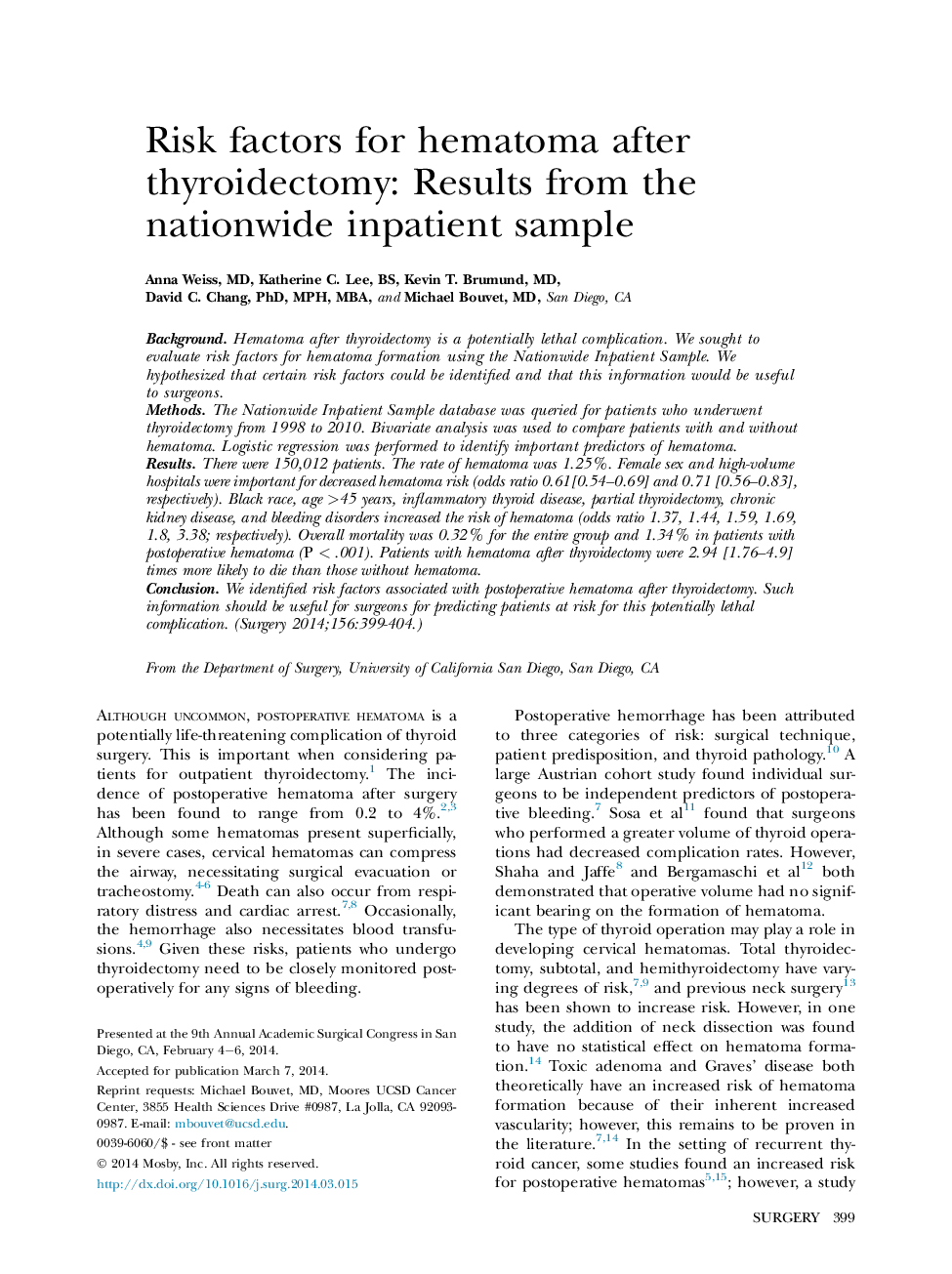| Article ID | Journal | Published Year | Pages | File Type |
|---|---|---|---|---|
| 6255696 | Surgery | 2014 | 6 Pages |
BackgroundHematoma after thyroidectomy is a potentially lethal complication. We sought to evaluate risk factors for hematoma formation using the Nationwide Inpatient Sample. We hypothesized that certain risk factors could be identified and that this information would be useful to surgeons.MethodsThe Nationwide Inpatient Sample database was queried for patients who underwent thyroidectomy from 1998 to 2010. Bivariate analysis was used to compare patients with and without hematoma. Logistic regression was performed to identify important predictors of hematoma.ResultsThere were 150,012 patients. The rate of hematoma was 1.25%. Female sex and high-volume hospitals were important for decreased hematoma risk (odds ratio 0.61[0.54-0.69] and 0.71 [0.56-0.83], respectively). Black race, age >45 years, inflammatory thyroid disease, partial thyroidectomy, chronic kidney disease, and bleeding disorders increased the risk of hematoma (odds ratio 1.37, 1.44, 1.59, 1.69, 1.8, 3.38; respectively). Overall mortality was 0.32% for the entire group and 1.34% in patients with postoperative hematoma (P < .001). Patients with hematoma after thyroidectomy were 2.94 [1.76-4.9] times more likely to die than those without hematoma.ConclusionWe identified risk factors associated with postoperative hematoma after thyroidectomy. Such information should be useful for surgeons for predicting patients at risk for this potentially lethal complication.
